Bridal lehengas symbolize not just beauty but tradition, culture, and personal beliefs. One size or style does not fit all—especially when it comes to religion. Each religious ceremony and celebration carries its own customs and colors, which translate into unique bridal fashion statements. Navigating the world of lehenga looks for various religions can be both enlightening and inspiring. In this comprehensive guide, we’ll explore how to tailor your bridal lehenga to reflect the rich heritage and shared faith of your marriage, providing an in-depth look for interfaith brides on selecting the perfect lehenga style for their special day.

Lehengas for Hindu Weddings
Vibrant and opulent, lehengas for Hindu weddings are a celebration of life, color, and love. The bride often adorns herself with traditional reds and pinks—a representation of happiness and good fortune. Rich fabrics like silk and brocade are favored for their luxurious feel, while intricate embroidery such as zardozi, mirrorwork, and sequins create a sensory delight.
The choli, or the blouse, can vary from a full-sleeved, high-neck design to a more modern, deep-cut and backless style. Lehengas in Hindu weddings often feature a lot of gold, as it’s considered an auspicious color. Gold jewelry, including maang tikka, bangles, and a nose ring, complement the ensemble perfectly, making the bride look resplendent.
Insightful Embellishments for Hindu Brides
Incorporating motifs that hold personal significance is the key. A bride might embroider her lehenga with the peacock or lotus, which are symbolic in Hindu culture. Another elegant touch is to have verses from Hindu scriptures delicately sewn into the lehenga—a beautiful, personalization honoring the bride’s beliefs.
Sikh Bridal Lehenga Styles
Sikh weddings are an embodiment of simplicity and spirituality. While the attire may not be as elaborate as other cultures, bridal lehengas for Sikh brides are dignified and refined. The preferred color for Sikh brides is often brighter, lighter shades—like pink or pastel orange, representing joy and new beginnings. The lehenga is usually paired with a sheer dupatta and a stylistically modest choli.
Sikh brides often choose to wear a traditional kalire, a set of bridles wedding jewelry, and may also opt for a phulkari-embroidered lehenga, which is native to the Punjabi culture. Floral patterns and chikan embroidery are a beloved choice, representing femininity and nature, while maintaining the simplicity cherished in Sikh wedding attire.
Culturally Appropriate Charm
When selecting a lehenga for a Sikh bride, it’s important to keep it traditional yet elegant. Avoiding heavy embellishments and opting for handwork that emphasizes the beauty of the fabric is a key consideration. Sikh brides often choose to drape their dupatta in the palla style, where it is elegantly pinned to the lehenga to showcase a profound sense of grace and modesty.
Lehenga Looks for Muslim Brides
Muslim bridal lehengas are a masterclass in elegance and modesty. The diversity within the Muslim community means that there’s no single universal wedding attire. However, the common thread is a preference for covered yet fashionable ensembles. The lehengas are often tailor-made, keeping in mind the conservative nature of the ceremony but without skimping on style.
Modest fashion is celebrated with full-sleeved cholis and and a heavier emphasis on the dupatta. Muslim brides might choose to cover their heads with the dupatta as a sign of modesty and piety. The color palette for bridal lehengas varies—from darker hues to pastels, depending on the cultural heritage. Embellishments include delicate beadwork, pearls, and resham embroidery, reflecting the subdued yet sophisticated style of Muslim brides.
Elegant Understated Embroidery
For Muslim brides, the magic is in the details. Pick a lehenga with intricate thread work and embellishments that exude a quiet luxury. A well-fitted, A-line silhouette often works best, offering grace and ease of movement, ensuring the bride feels comfortable as she celebrates her union.
Christian Bridal Lehenga Styles
Christian bridal lehengas embody the purity of white, signifying the bride’s new beginning. While traditions vary across the sects, white or pastel shades are the perennial favorites. Christian bridal lehengas are often characterized by their Western silhouettes—ball gown or A-line skirts paired with a bodice or a corset.
The embellishments on Christian bridal lehengas are often lace details or subtle embroidery. The veil plays a crucial role in the Christian bridal ensemble. It is often embroidered or has lace edges, adding timeless romance. Christian brides also pair their lehengas with tiaras or floral crowns, completing the fairy-tale effect.
Timeless Minimalism
For Christian brides, less is often more. Choose a lehenga with a monochromatic palette or delicate pastel shades. Silhouettes that are clean and traditional, with a focus on the veil and headpiece, offer a timeless and graceful look reflective of the Christian wedding aesthetic.
Lehenga Looks for Interfaith Weddings
For brides who have the joy of sharing two rich religious heritages, an interfaith lehenga serves to honor both traditions. Interfaith bridal lehengas often combine elements of both cultures, presenting a harmonious fusion of colors and styles. These lehengas are characterized by their duality—two dupattas, two distinct color schemes, and even two silhouettes merged into one ensemble.
While the lehenga creates a visual representation of unity, the accessories often reflect a balance between different cultural motifs. Jewelry might be a mix of designs or traditional pieces from both cultures. The beauty of an interfaith bridal lehenga lies in its ability to create a balanced, respectful presentation of each heritage, while celebrating the couple’s unique union.
The Art of Balancing Traditions
Selecting an interfaith bridal lehenga requires a delicate touch. Choose a palette that unites the symbolic colors of both religions. The craftsmanship should incorporate motifs and designs relevant to each faith, serving as a testament to the diverse background of the bride and groom. The result is a lehenga that is not just a garment but a piece of living history and love story.
In summary, bridal lehengas are an exquisite canvas on which to display the tapestry of your religious and cultural heritage. By understanding the symbolic significance of colors, designs, and motifs, brides can create a bridal look that truly encapsulates the essence of their faith and tradition. It’s a personalized, creative endeavor that results in a breathtakingly beautiful and culturally rich celebration of love.





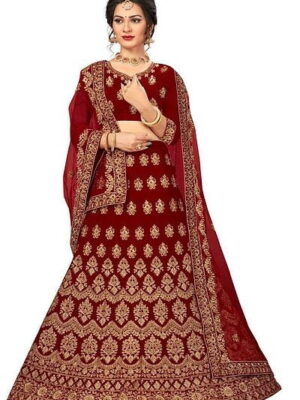
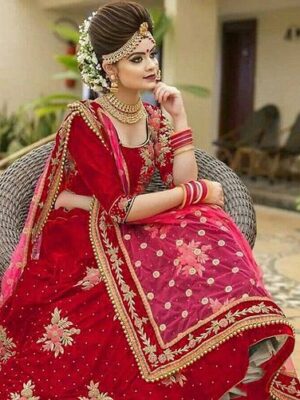
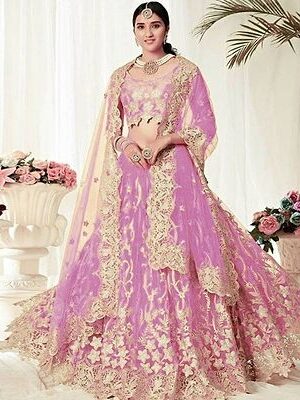
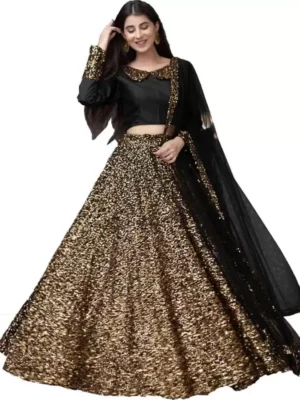
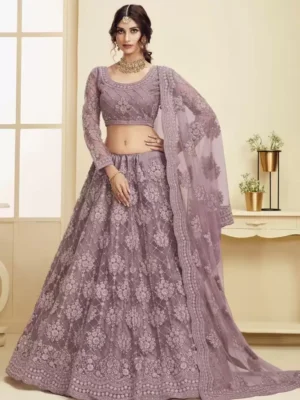
Recent Comments